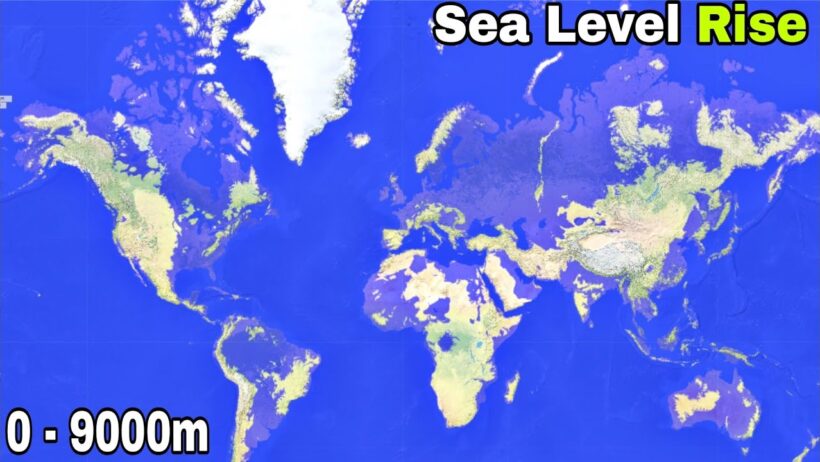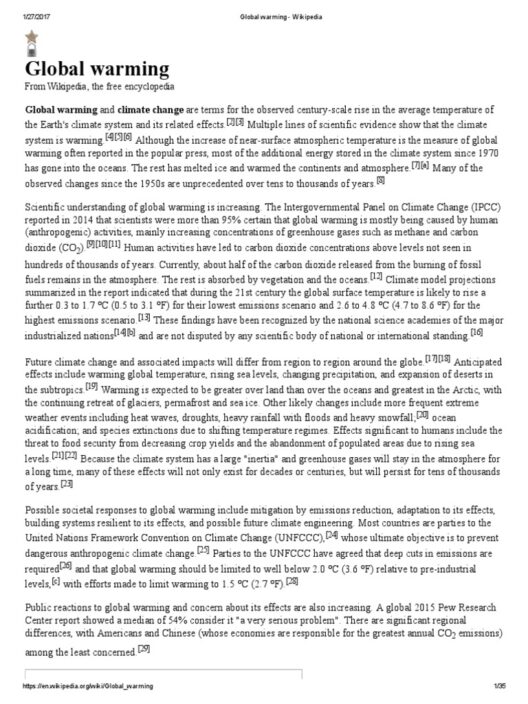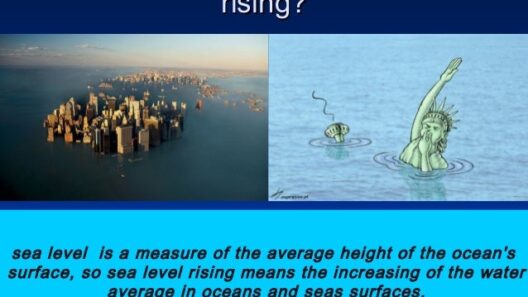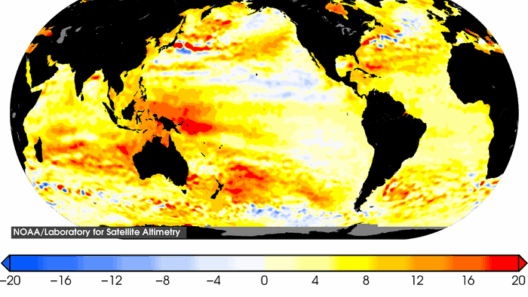Rising sea levels represent one of the most pressing environmental challenges of our time, impacting ecosystems, economies, and human habitation worldwide. The phenomenon, driven primarily by climate change, poses dire implications that compel urgent attention. This article delves into how rising sea levels will affect the world, exploring global implications such as ecological disruption, socio-economic strain, and the challenge of displacement.
As the world warms, two primary factors contribute to rising sea levels: the melting of ice sheets and glaciers, and the thermal expansion of seawater as it heats. Each of these factors pushes water into the oceans, resulting in higher sea levels that threaten coastal communities and ecosystems alike. Understanding the multifaceted impact of this ongoing environmental crisis is imperative for developing strategies that mitigate its effects.
Ecological Disruption: The Fragile Balance of Coastal Ecosystems
Coastal ecosystems, including wetlands, mangroves, and coral reefs, serve as critical buffers against storms and provide habitats for countless species. However, these intricate systems are under siege as rising sea levels encroach upon them. The inundation of saltwater transforms freshwater ecosystems, leading to the decline of native species and the proliferation of invasive species that can thrive in altered environmental conditions.
Wetlands serve a vital role in carbon sequestration, acting as natural sponges that absorb excess carbon dioxide. As these areas are submerged, their ability to mitigate climate change diminishes, exacerbating the very problem they help to control. Furthermore, the loss of wetlands leads to reduced natural storm defenses, increasing the vulnerability of inland areas to tropical storms and hurricanes.
Moreover, coral reefs, known for their biodiversity, face existential threats from rising water temperatures and acidification, both of which are exacerbated by increased sea levels. As these ecosystems decline, so too does the livelihood of communities that depend on fishing and tourism. The cascading effects of ecological disruption emphasize the urgent need for integrative approaches to climate resilience.
Socio-Economic Strain: Economic Vulnerabilities and Infrastructure Challenges
The economic ramifications of rising sea levels are profound and multifarious. Coastal cities, where a significant portion of the global population resides, are particularly at risk. As sea levels rise, damage to infrastructure becomes a pressing concern; roads, bridges, and public utilities face the threat of inundation, leading to costly repairs and potential long-term damage.
Insurance industries grapple with new realities as they assess risks and recalibrate policies in the face of increased flooding and property damage. Routine flood events may transition into catastrophic losses, prompting insurers to raise premiums or withdraw coverage altogether. This shift threatens the viability of housing markets in vulnerable areas and undermines economic stability for millions who rely on modest homes for their livelihoods.
In addition, agriculture stands to bear significant costs. Saltwater intrusion can devastate farmland, reducing crop yields and threatening food security. With rising sea levels, farmers along coastal regions may face untenable choices: abandon their livelihoods or invest in costly adaptations that may not guarantee their success. Subsequently, the intertwining challenges of food and economic security grow increasingly acute as rising sea levels progress.
Displacement Dilemmas: The Human Toll of Rising Tides
One of the most chilling implications of rising sea levels is human displacement. As coastal areas become uninhabitable, populations face forced migration — a phenomenon that has been dubbed “climate refugees.” Global estimates suggest that millions may need to relocate due to the immediacy of flooding and loss of land. However, displacement is not merely a logistical problem; it poses profound ethical questions about migration rights, social justice, and humanitarian aid.
The social fabric of communities is often weakened during such transitions, as individuals are uprooted from their established lives. Cultural heritage, local traditions, and ways of life are jeopardized, often without potential for reclamation. Countries less equipped to handle mass migration face additional challenges, grappling with how to integrate those displaced and mitigate social tensions that may emerge from sudden population inflows.
As the scars of displacement begin to surface, governments worldwide must prioritize inclusive policies that address the needs of those forced to leave their homes. Failure to respond adequately could exacerbate tensions and create divisive social conditions, threatening the fabric of communities across national and regional borders.
In summation, the effects of rising sea levels extend beyond mere physical alterations to our planet. They challenge our ecological systems, strain socio-economic infrastructures, and precipitate human displacement, generating ripples that can touch every facet of life. It is imperative that comprehensive and strategic approaches are pursued internationally to address this challenge. Only through cohesive action can humanity hope to mitigate the impending consequences of rising seas and safeguard the future of our global community.








